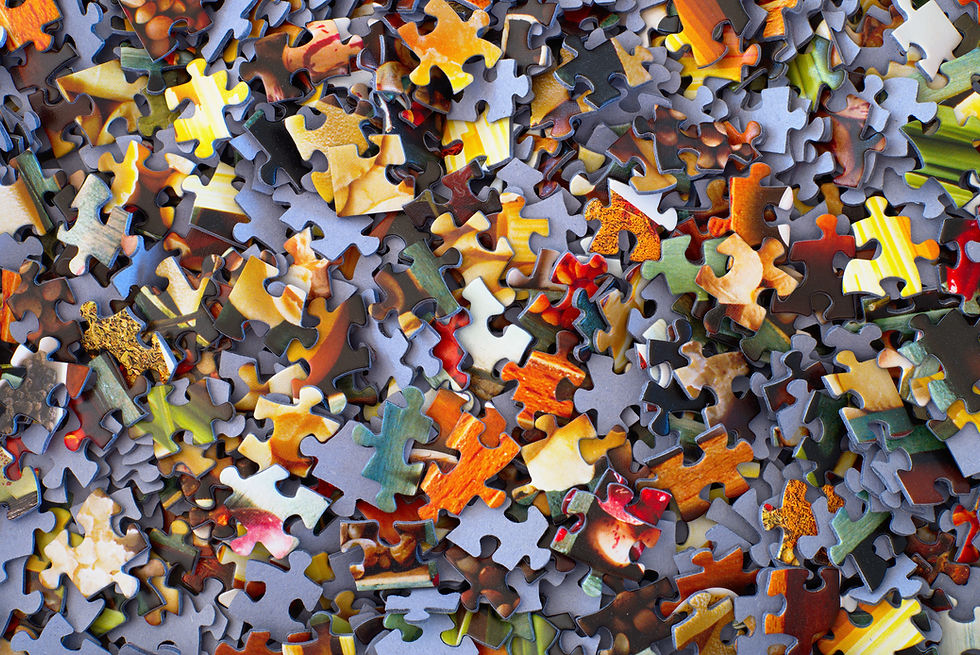How my ADHD brain has led me to the world of Pilates
- ingridtonelli
- Feb 21, 2022
- 4 min read
Updated: May 6, 2023
Back in 2014 I had a mental breakdown...
After been diagnosed with ADHD and Central Auditory Processing Disorder, I tried to pursue a holistic approach in order to help myself place the pieces (or my brain) back together. Yoga and or Pilates were suggested by my therapist to help regulate my central nervous system, however I didn't start my Pilates Journey until late 2016.
But how exercise is related to a healthy central nervous systems?

Exercise has proven to help decrease anxiety and depression as stimulates the nervous system and releases a variety of chemicals in the brain, increasing blood flow and oxygen to the brain, even in those who are older and have been sedentary. More blood flow to the brain means that cells have more fuel to operate, supporting the brain’s network.
Another skill our body maintains on a subconscious level is the ability to maintain our posture. Most people can sit or stand upright without given much thought. But for people with learning disabilities, their core muscles, which include the muscles in the abdomen, back, and pelvis, responsible for stabilizing the spine and pelvis during movement, more often than not, lacks tonicity.
But what's the connection between the brain and core muscles?
The brain plays a vital role in controlling the aforementioned muscles. The motor cortex, located in the frontal lobe in the brain, is responsible for initiating and coordinating movement. When we want to move our core muscles, the motor cortex sends signals through the spinal cord to the muscles, telling them to contract or relax.
Additionally, the brain and core muscles are connected through a network of nerves called the peripheral nervous system. This system connects the brain and spinal cord to the muscles throughout the body, including the core muscles. The nerves in this system allow the brain to send messages to the core muscles and receive feedback about their position and movement.
Having two children with learning disabilities myself, made me realize how movement is an essential component to physical and mental development. Paying close attention to the way they move and how they integrate their movement, the dynamic of the body performing daily tasks: sitting, standing, walking, jumping...requires practice and awareness. It is important to note that not all children with learning disabilities present trunk/core instability.
A Pilates studio brings the perfect element that enables
the individual to focus on their learning process.

Pilates, Changing the Brain and Plasticity
Plasticity, also known as neuroplasticity or neural plasticity, refers to the brain's ability to adapt and change in response to new experiences, learning, and environmental factors. It is the brain's ability to reorganize itself by forming new neural connections and pathways, as well as modifying existing ones. More recent studies are now showing that the brain is capable of changing and adapting throughout a person's life, from infancy to old age.
Plasticity can occur in response to various factors, including learning new skills, experiencing new environments, and recovering from brain injury or disease. When a person learns a new skill, such as playing a musical instrument or a new language, the brain forms new neural connections and strengthens existing ones, which enhances the ability to perform the skill. Similarly, when the brain is damaged by injury or disease, it can reorganize and compensate for the damage by forming new neural connections and pathways. This is why rehabilitation is often effective in helping people recover from brain injury, as it promotes plasticity and encourages the brain to reorganize itself in response to the injury.
Pilates exercises require concentration, control, and precision, which can help to improve cognitive function and promote neural plasticity. Additionally, Pilates equipment, such as the reformer, cadillac, and wunda chair, can further enhance the neural changes by providing not only additional resistance and support, but also different levels of challenges for the brain leading to increased neural stimulation and growth.
Having a beautiful brain that might stray in a million directions and interests (at the same time!) Pilates has stood the test of time for me. Our brains are not only plagued with disfunction but also it's emotionally draining having to deal with the guilt, the anxiety, depression, embarrassment, insecurities...and so on.
The discipline, consistency, order, focus and memorization required to become proficient in the method, helped me regulate my nervous system and subsequently, my brain function. The organization, cleanliness, and a low key, no music environment, can also positively impact the integration mind/body.
I am honored to share my Pilates journey with you all and look forward to not only helping those with ADHD, but anyone suffering from issues of focus, connection and overstimulation. Joseph Pilates understood that the well-being of an individual could only be achieved by engaging the body and mind.
If my story resonates with you, do not hesitate to send a message! My belief is that by sharing experiences and connecting with others, we can potentially help those around us to improve their lives through movement. Mental Health Matters!

Yours Truly,
Ingrid
**This disclaimer informs readers that the views, thoughts, and opinions expressed in the text belong solely to the author, and not necessarily to the author's employer, organization, committee or other group or individual.




Comments